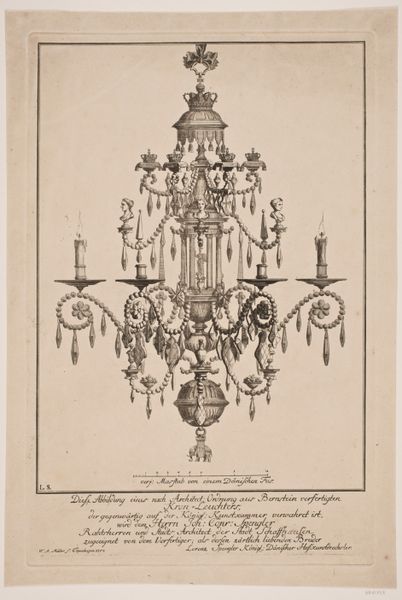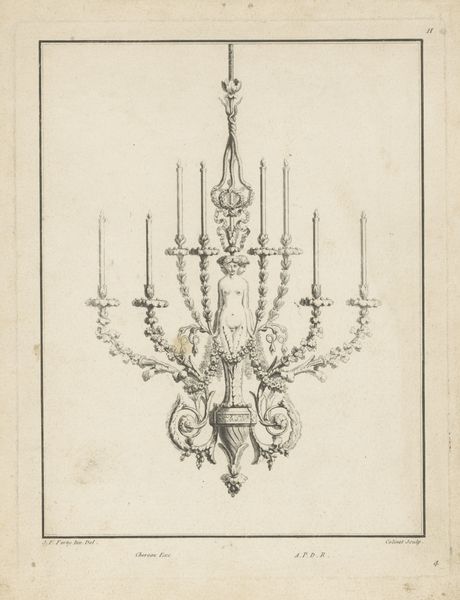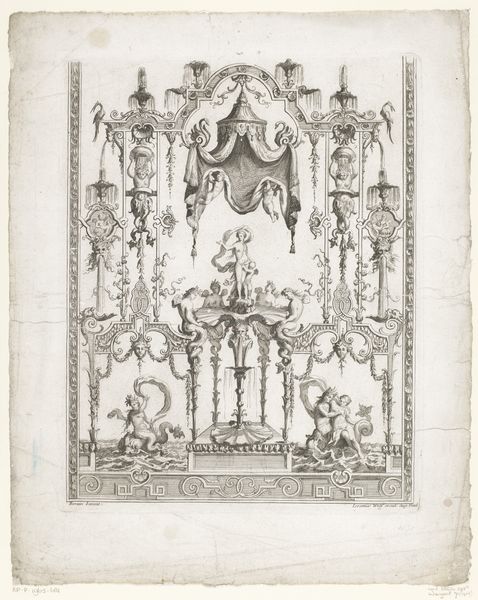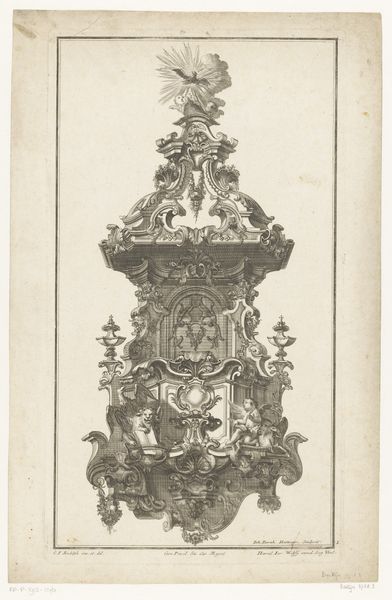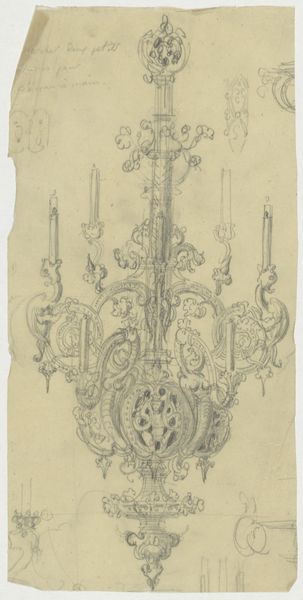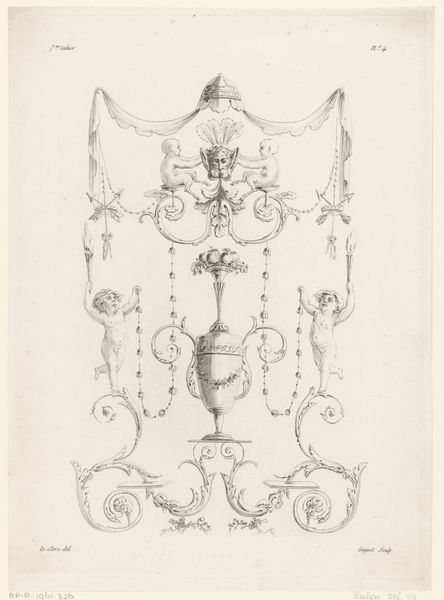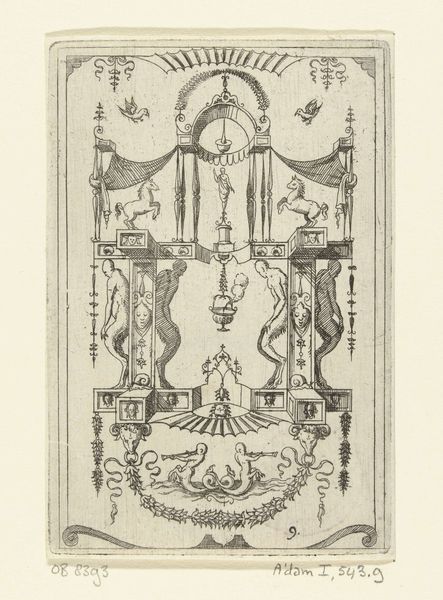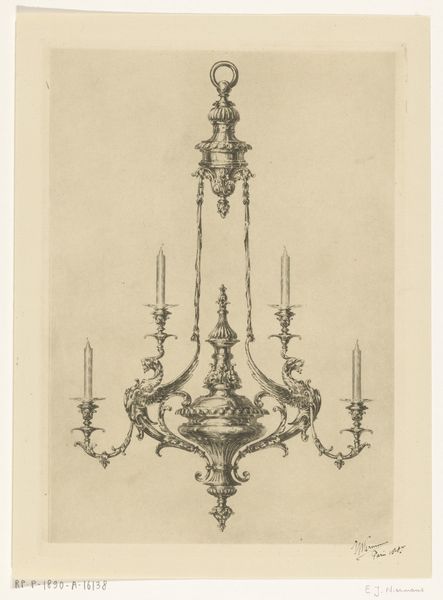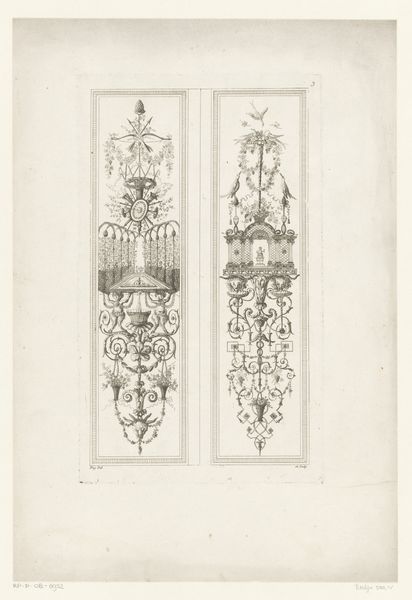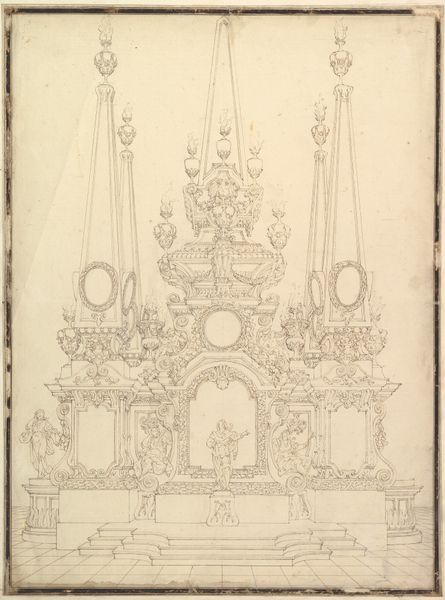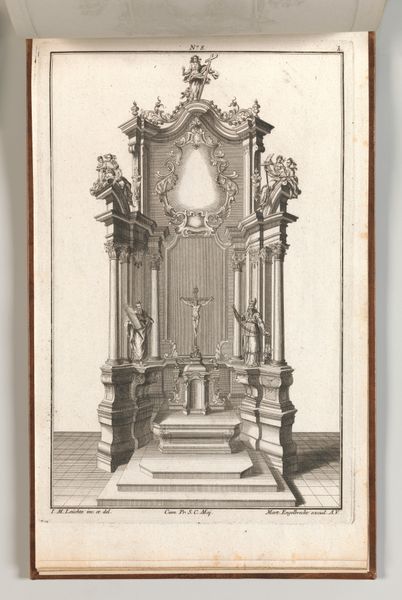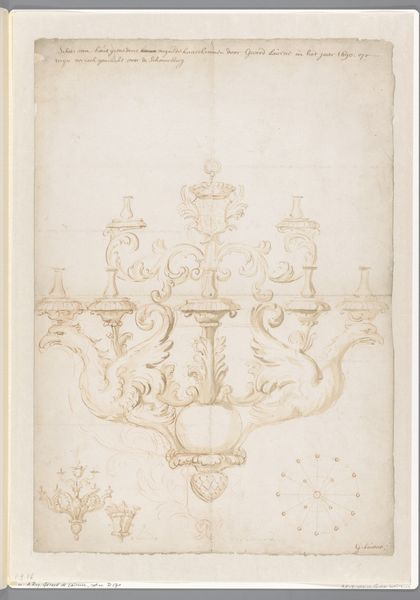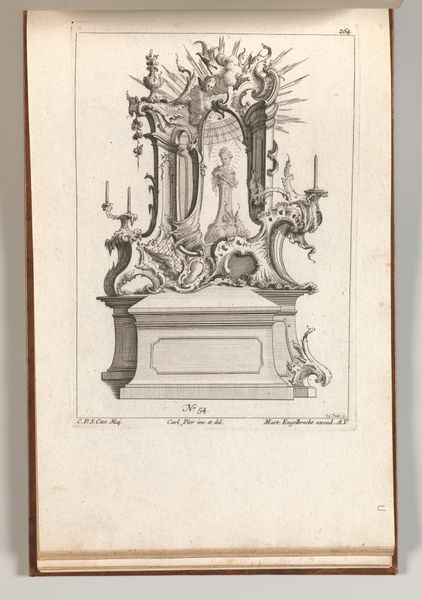
drawing, ink, pen
#
drawing
#
baroque
#
pen drawing
#
ink
#
pen
#
decorative-art
Dimensions: 310 mm (height) x 228 mm (width) (bladmaal)
Curator: It strikes me first as a celebration of ornamentation, almost dizzying in its details. Editor: That's fitting. We're looking at "En lysekrone", or "A Chandelier," a pen and ink drawing dating from 1746 to 1751. It's currently held in the collection of the Statens Museum for Kunst. It was made by Marcus Tuscher. Curator: Tuscher. A German-Danish artist. Knowing that lends context, especially as the drawing's ornate Baroque style speaks volumes about the consumption habits and tastes cultivated by the elite during this era. Editor: Right. And consider the drawing itself. Pen and ink are relatively accessible materials. The real investment here would be in the labor involved. Imagine the hours required to meticulously render all these delicate details, beads, and miniature sculptures of what appears to be elephants on the base. Curator: Absolutely. This chandelier, even in its drawn form, signals status and power. Light was a luxury. And to suspend that light within such an elaborately crafted object signifies a concentrated display of wealth. Those crowned figures also suggest specific allegiances, perhaps alluding to royal patronage or dynastic ambitions. Editor: The material contrast implied by the rendering—the presumed glimmer of the glass or crystal against the sheen of polished metal—underscores that sense of exclusive luxury. It speaks to the aspirational desire for access to such refined goods, shaping social hierarchies of that period. Curator: Its intended location in the Kunstkammer suggests an active role of art in structuring identity. The elite visiting such museums during this time were very aware that taste was a form of currency, of defining their status. Editor: In a way, then, even this design on paper serves a purpose. It's not just about lighting a room, but illuminating social structures, and hierarchies through crafted, symbolic form. The materiality here is more of a blueprint of power. Curator: Exactly. The act of sketching something like this allowed for distribution of design and ideas, making elite taste a pervasive and accessible tool. Editor: Seeing this has truly offered more light on a society obsessed with reflecting its power structures! Curator: A brilliant find—it certainly sheds new light on art's role in visualizing hierarchy.
Comments
No comments
Be the first to comment and join the conversation on the ultimate creative platform.
